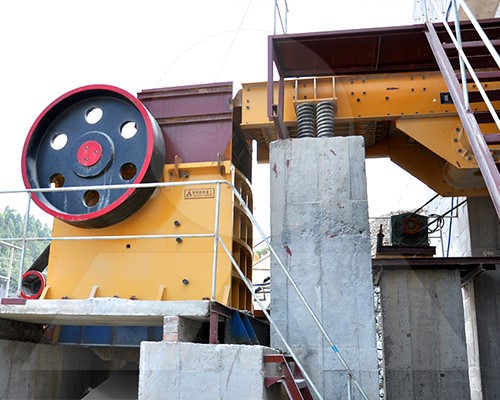Jaw Crusher Troubleshooting: Common Faults and Effective Solutions
A jaw crusher is the cornerstone of most primary crushing operations, built for durability and reliability. However, like any heavy machinery, it can encounter faults that disrupt workflow and impact productivity. A proactive approach to jaw crusher maintenance and a solid jaw crusher troubleshooting plan are essential for a smooth and profitable operation. This guide covers the most common jaw crusher faults and provides practical, effective solutions.

Fault 1: Excessive Vibration and Noise
While a certain level of vibration is normal, excessive shaking or unusual banging sounds are a sign of trouble. This is one of the most frequent jaw crusher problems and solutions operators must address.
Possible Causes:
- Loose bolts: Critical bolts on the flywheel, jaw plates, or frame can become loose over time.
- Uneven jaw plate wear: The movable and stationary jaw plates may be worn unevenly, causing an unbalanced crushing force.
- Worn or broken toggle plate: A worn toggle plate can cause excessive movement of the swing jaw, leading to vibration.
- Unbalanced flywheel: The flywheel itself might be unbalanced, especially after maintenance or if foreign material has built up.
Effective Solutions:
- Immediately shut down the machine. Inspect and tighten all bolts, paying close attention to the flywheel and jaw plate bolts.
- Check the jaw plate wear. If it’s uneven, you might need to rotate the plate to extend its life or replace it entirely.
- Examine the toggle plate for any signs of cracking or excessive wear. A damaged toggle plate must be replaced immediately to prevent major structural failure.
- If the flywheel is the issue, it may need to be rebalanced by a professional technician.
Fault 2: Motor Overheating
A motor that frequently overheats can lead to a complete shutdown and costly damage.
Possible Causes:
- Overfeeding: Feeding material too quickly or in quantities larger than the crusher’s capacity forces the motor to work harder, causing the temperature to rise.
- Electrical issues: Incorrect voltage, current, or a faulty motor winding.
- Bearing problems: Worn or poorly lubricated bearings can increase friction, leading to a rise in motor temperature.
- Poor ventilation: Dust buildup on the motor’s cooling fins or an obstructed fan can prevent proper heat dissipation.
Effective Solutions:
- Adjust the feed rate to a level that the crusher can handle efficiently.
- Have an electrician verify the power supply is correct for the motor’s specifications.
- Regularly inspect and lubricate all bearings. Replace any that are damaged or show signs of wear.
- Ensure the motor and its cooling components are clean and free of dust.
Fault 3: The Crusher Stops or Gets Clogged
A crusher jam is a common problem that brings the entire production line to a halt.
Possible Causes:
- Feeding oversized material: Material that is too large to fit in the crusher’s opening can jam the jaw.
- Uncrushable materials: The presence of tramp iron (steel, rebar, etc.) or other hard, uncrushable objects can jam the crusher.
- Insufficient power supply: The motor may not have enough power to crush particularly tough material.
Effective Solutions:
- Safety first: Immediately turn off the machine and disconnect the power. Never attempt to clear a jam while the crusher is powered on.
- Carefully remove the jammed material. This may require the use of a crane or other heavy equipment.
- Implement a metal detector or a pre-screening system on the conveyor belt to remove uncrushable materials before they reach the crusher.
- Verify that the power supply meets the crusher’s requirements.
Fault 4: Worn Jaw Plates and Reduced Output
Over time, the jaw plates will inevitably wear down, impacting crushing efficiency and product quality.
Possible Causes:
- Normal wear and tear: The constant crushing of rock causes friction and abrasion.
- Crushing abrasive materials: Hard, abrasive rocks like granite and basalt accelerate plate wear.
- Improper installation: Incorrectly installed plates can lead to uneven wear and premature failure.
Effective Solutions:
- Establish a routine inspection schedule to monitor jaw plate wear.
- Rotate the plates when they are partially worn to maximize their lifespan. Most plates are reversible.
- Replace worn-out plates promptly to maintain optimal crushing performance and product size.
- Ensure proper installation and a tight fit to prevent uneven wear and movement.
By understanding these common jaw crusher faults and applying these solutions, you can significantly extend the life of your equipment, minimize unscheduled downtime, and ensure a safe and productive crushing operation.
- > Impact Crusher for Processing Dolomite and Tantalite in Mining Plants
- > Efficient 100 TPH Mobile Cone Crusher for South African Mining Operations
- > Copper Ore Impact Crusher: An Effective Tool for Secondary Processing in Ore Cleaning
- > The Essential Role of Ball Mills in Ore Mining
- > The Operational Characteristics of Cone Crushers
- > Mobile Jaw Crushers for Mining: Versatile Solutions for Efficient Ore Processing
- > 200 TPH Mobile Impact Crusher: High-Efficiency Solution for On-Site Crushing
- > The Role of Impact Crushers in Iron Ore Mining Operations


Online




Message
